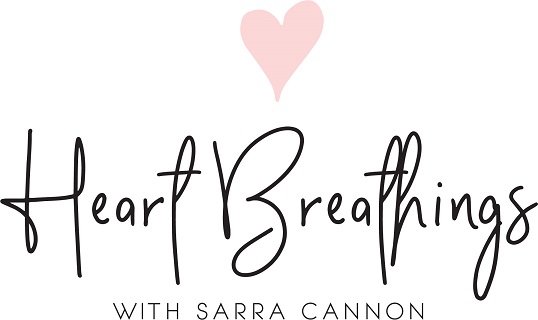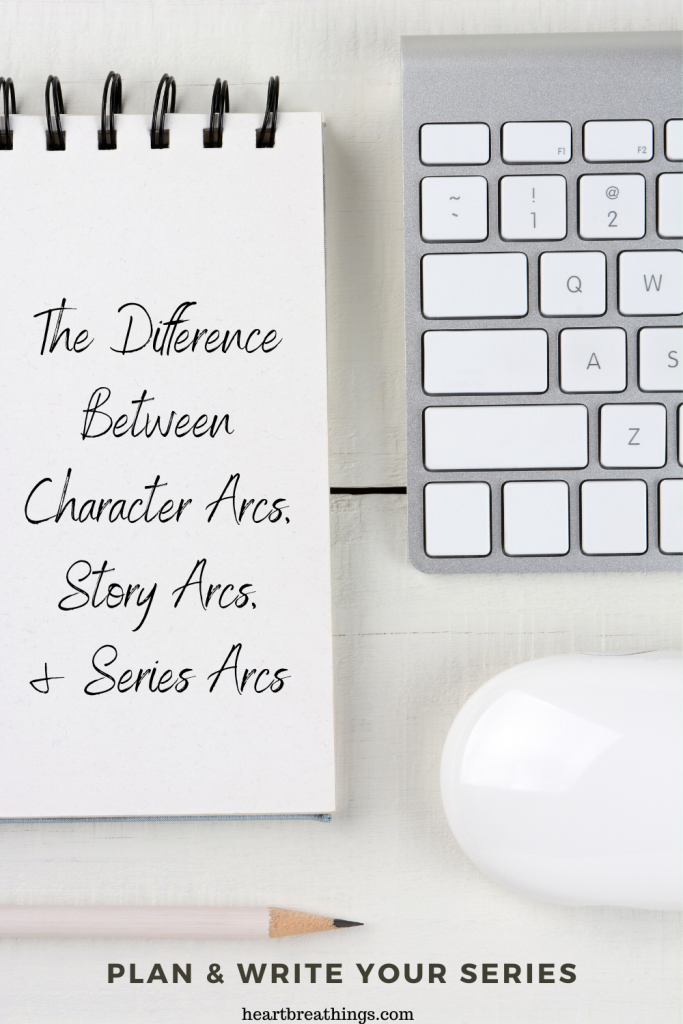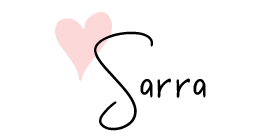

July 16, 2020 by Sarra Cannon
Welcome back to another post and video about planning and writing your book series. Today, we’re discussing the differences between a character arc, a story arc, and a series arc.
I’ll be posting 8 videos on “How to Plan and Write A Series” over the course of several weeks. If you’re just finding this series, you can find last week’s post on the different types of book series here.
I would also love for you to follow me over on YouTube to see the complete set of videos!
The basic difference between a character arc and a story arc is that the character arc is the internal journey your character takes, while the story arc is the outer journey. Below, we’ll go into these in more detail.
A character arc is the transformation or inner journey of a character over the course of a story.
Basically, this is your character’s internal, personal change from the beginning of the story to the end.
Character arcs are most often positive, meaning that your character overcomes their flaws or wounds during the course of the story in order to become a better, stronger person in some way. This isn’t about them becoming more skillful or stronger in their body, but rather, the character arc is about what’s happening to your character on the inside.
They will finally learn to open their heart to love, finally begin to trust, overcome their own selfish pride and learn to become the self-less hero we need them to be in order to defeat the villain. You get the idea.
Your character’s arc will go hand-in-hand with the story arc, because it’s usually the events in the plot that will force them to transform and change or face their “ghost” in some way.
Sometimes, novels will have a protagonist or character with a negative story arc, meaning that the challenges or struggles in the story were too big for the character to overcome and led them down a darker path. (Helloooo, Anakin Skywalker!)
This is relatively rare, but is probably most often seen in origin stories for villains later in a series.
The type of character arcs you will create in a book or series often depends on the genre or type of series you’re writing.
In most Dynamic Series, the main protagonist will usually go through a massive transformation by the end of the story. Each book will contain a piece of that character’s transformation, bringing them closer and closer to the person they need to be to complete the story and be victorious.
When it comes to Standalone Series, again it depends on genre.
In most romance Standalone Series, the hero and heroine in each book will have a complete character arc, and the book’s plot or story arc cannot reach a happy resolution until this happens for both characters. There is no happily-ever-after in romance without a character arc.
Granted, you will sometimes have romances that have little to no character arc at all. This is seen in some erotica novels, for example, where the encounter itself is the main event and no real transformation is necessary for the storyline.
With Standalone Mystery or Detective Series, you can have a large, transformative character arc, but you can also have a very slow character arc where the main detective only grows in very slight shifts through each book. It’s also possible to write a Detective series where there is almost no discernible character arc at all, as in the James Bond books and films.
If you are writing a series that has multiple points-of-view, each of your main characters will often have some type of character arc that spans the series.
When you first begin planning your series, it’s incredibly important to make a decision about not only what type of series you’re writing (read this post about series types if you missed it last week), but also what type of character arc is best suited to your story.
We’ll discuss this more in next week’s video and post on Planning Your Series, so check back for more information next Thursday.

In most books that have a character arc, the protagonist’s journey follows a similar flow or structure.
If you want to read more about character arcs and the various elements and structure, I highly recommend for you to check out the world of Michael Hague, KM Weiland, and the book “The Complete Writer’s Guide to Heroes and Heroines“.
A Story Arc is the progression of events in your story. It is the flow of your plot. This is also known as a Narrative Arc.
Story Arcs consist of five classic elements.
While every story didn’t necessarily have to have a character arc, every story needs a story arc. This is more than just the plot. A story arc is really the way the plot shows up on the page. It’s the sequence of events. The flow of your story.
If you want to study more about different types of stories and story archetypes, check out Christopher Booker’s, ‘The Seven Basic Plots” or Jessica Brody’s taken on Blake Snyder’s work in “Save The Cat Writes A Novel“. Another one I’ve heard recommended that I haven’t read yet is “Story Trumps Structure” by Steven James.
You can usually identify a character arc separately from a story arc, but the two pieces of a novel or series really go hand-in-hand. As a writer, it’s your job to create a story arc that will push your character to transform, and it’s your character’s job to transform so the he or she can fulfill the promise of your story arc.
Throughout your story, your character isn’t just transforming willy-nilly. There are events and challenges that are challenging them to change or to see their own flaws. There are also moments in your story that should be a catalyst for your character’s realization that this lie they’ve been telling themselves all along is just that – a lie.
In that moment, your character begins to see a glimpse of what their life could be or who they could become if they can only change and overcome their past wound.
It’s such a great and brilliant experience to see this truly done well where character and story arc come together in perfect synergy. If you have a moment, share your favorite examples in the comments here or on YouTube.
One of mine is The Matrix Trilogy!
A series arc is the overarching story arc that takes place over several novels in a series.
Basically, it’s story arc on a larger scale. You can (and often should) have both a series character arc and a series story arc.
One thing to understand as you begin writing your series, though, is that while every book needs a story arc, not every series needs to have a series arc.
Dynamic series have to have a series arc. They wouldn’t work otherwise.
But Standalone series don’t necessarily need a series arc. The books can be tied together by a town, a family, an object or event, a single detective, or similar device, and for some Standalone Series, this is enough.
A series arc, however, is a great way to tie multiple books together in a stronger way. We’ll discuss this more in a future video and post about marketing your series, but for now, just know that in general, readers tend to be more loyal and invested in series that have at least some type of overarching series story, villain, or question.
As I was researching for this series of videos, I came across this blog post by Ace Jordyn comparing a series arc to an umbrella. I loved it, so I’m using it in my own way here, too. Find the original article on Melding a series arc and a story arc here.

A series arc is made up of clues, questions, challenges, and breadcrumbs carried out through all of the books in the series. It still follows a similar structure of rising and falling action, but instead of occurring in a single book, it is spread out across multiple novels.
Sometimes, the series arc seems to be more of a small subplot before the number of clues and reveals show it to be a much bigger part of the overall story. Other times, the series arc is obviously the main idea or story question of the whole series right from the beginning.
It will be up to you as the author to decide how you want to incorporate a series arc into your overall series (or if you want one at all), but one of the very best ways to figure this out and to learn how to do it is to consume as many series as possible, particularly in your chosen genre.
Learn from the masters, as they say.
Let’s briefly take Harry Potter as an example. Each book in the series has its own distinct story arc (in this case usually taking on a mystery structure). The Sorcerer’s Stone, The Chamber of Secrets, The Triwizard Tournament, etc.
However, each book also introduces a little bit more to further the full story arc of Voldemort’s return to power. As the series progresses, the Voldemort storyline begins to take up more of the center stage (rising action) until it finally comes to a climax and resolution in the final book of the series.
Likewise, when we first meet Harry, he believes he’s nothing special. Doomed to a life under the stairs. In each book, he learns a little more about who he truly is. Each step in his journey, each foe he overcomes, and each mystery he solves, brings him that much closer to becoming the person he needs to be in order to defeat Voldemort once and for all.
In this way, the character and story arcs in each book work in perfect unison, both coming to a final series climax at the end of the final book.
A lot of times in Dynamic Series like this (and like my own Shadow Demons Saga), each book will have a climax and resolution, but there will be little hint or sometimes a major reveal or twist right at the end of the book, after the resolution, that leads into the next book. (Cliffhanger alert! More on this in next week’s video!)
It’s also worth noting here that some series have multiple series arcs. The way this works is that there will often be groups of novels in a series that lead to a climax and resolution before a new series arc begins.
For example, the first three books in a series may have mini-bosses that each reveal a piece of the overall series arc puzzle. Then, the fourth book may see your protagonist taking on the main boss that was presented in the first part of the series.
In book 5, though, a new series arc begins, introducing a new villain or shady organization that will now be faced and defeated over several stories or novels before another climax and resolution.
This is particularly common in lengthy series where there are more than five or six books. If you have some good examples you love, share them here!
Sometimes, like in the Marvel Comics Universe, you can have many story arcs and series arcs converge in a single, overarching storyline that concludes with your main characters fighting the ultimate evil. So much fun, but planning a large series or multiple series in this way takes work!
Next week, we’ll discuss Planning Your Series. I’ll have a free workbook for you to download that will help you plan all of this out, so be sure to sign up for my mailing list and get access to my free HB Resource Library!
In the end, it’s up to you as the author and creator to understand the different types of series and the difference between the various character, story, and series arcs so that you can create the type of series you most want to write. I hope this set of videos will help you on your journey.
I’ll see you next week for Video #3: Planning Your Series.


I have been self-publishing my books since 2010, and in that time, I've sold well over half a million copies of my books. I'm not a superstar or a huge bestseller, but I have built an amazing career that brings me great joy. Here at Heart Breathings, I hope to help you find that same level of success. Let's do this.